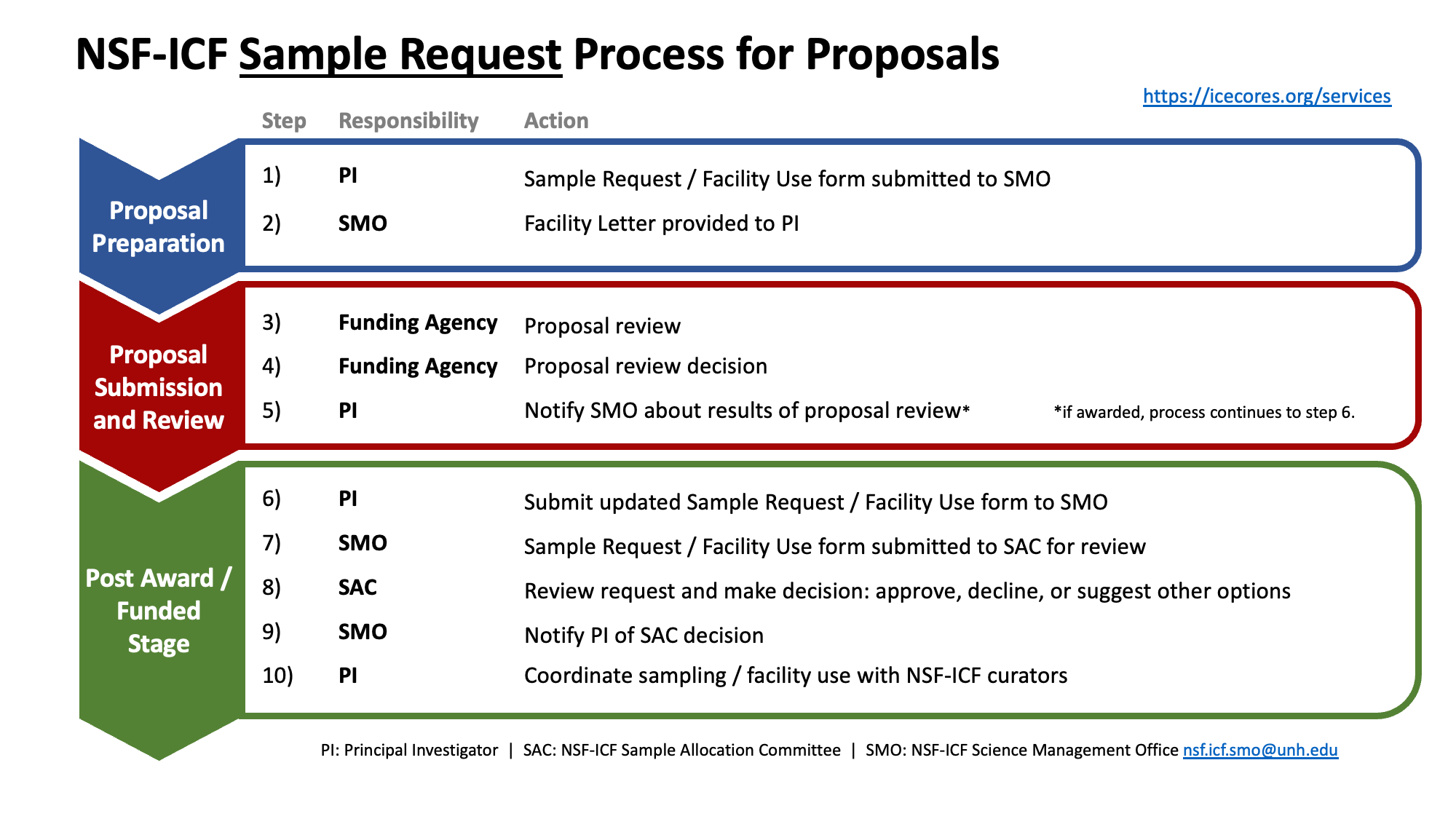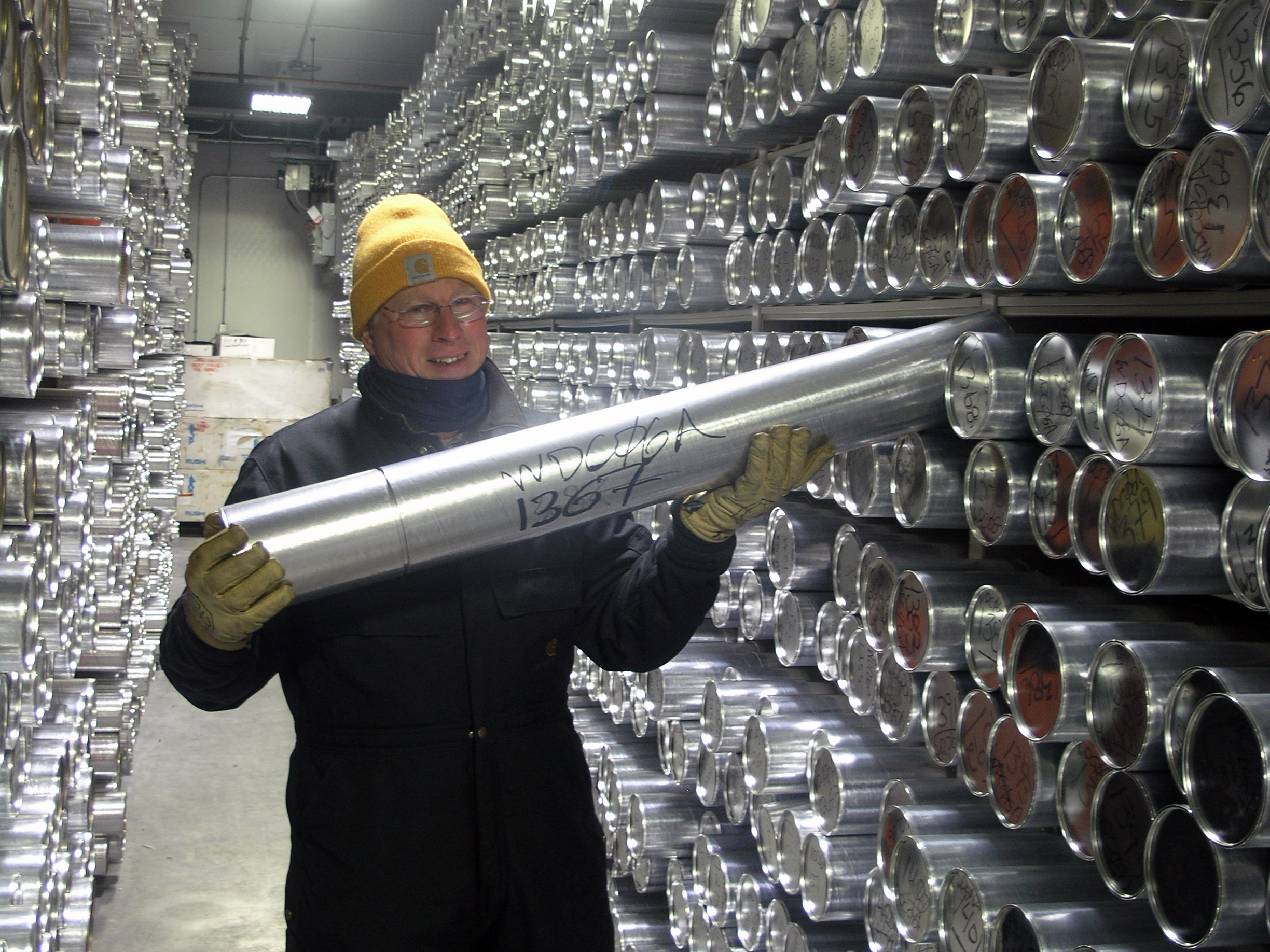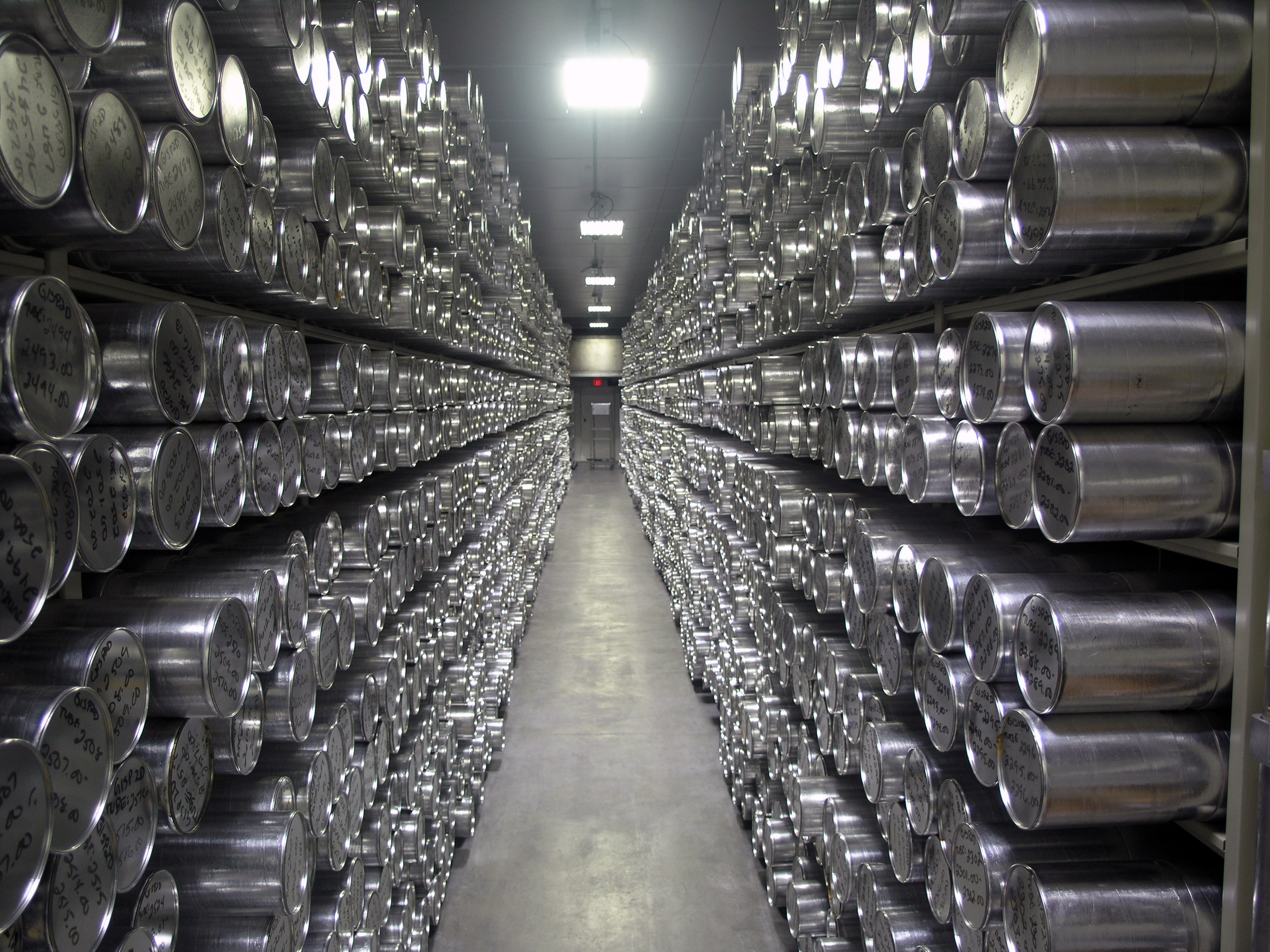Contact the Science Management Office (SMO) ( nsf.icf.smo at unh.edu ) at least four weeks prior to your proposal submission deadline if you are submitting a proposal that requires any of the following NSF-ICF services:
- Sample Requests
- Storage of Cores (even if just temporarily)
- Use of the Facility (sample cutting, core processing lines)
How to Request Services
Step 1
- Familiarize yourself with the NSF-ICF Use and Ice Core Sample Allocation Policy
Step 2
- Download and complete the Sample Request/ Facility Use form and email the completed form to nsf.icf.smo at unh.edu.
Step 3
- The SMO will review your email and your completed Sample Request/ Facility Use form and follow-up with you.
Sample Requests
Sample requests are coordinated through the Science Management Office. Samples are available to investigators, but NSF-funded investigators may be given priority to certain core sections. Non-U.S. scientists and non-National Science Foundation (NSF) funded scientists may be required to have an NSF funded collaborator before they can be given access to certain ice cores. If you have questions, contact Joe Souney at nsf.icf.smo at unh.edu.
Samples processed at ICF are handled using polypropylene gloves. Working surfaces are a combination of polycarbonate, acrylic, UHMW plastic, Formica counters, and stainless steel cleaned with ethanol. Saw blades are degreased with ethanol and made from high-speed steel, spring steel, or high-carbon steel and may have tungsten or titanium carbide tips, depending on the blade.
The NSF-ICF uses extreme care in preparing samples but is not equipped to provide samples free of contamination on their surfaces. If you receive samples, you will receive frozen samples from the NSF-ICF that need to be decontaminated at your laboratory.
View our INVENTORY for a list of the cores available in the NSF-ICF archive.
Generally there are three types of sample requests:
- Pilot studies
- Funded proposals
- Deaccession ice
1. Pilot Studies
Requests for limited samples are available to qualified investigators for use in pilot studies.
- Submit a completed Sample Request/ Facility Use form to the Science Management Office (SMO; nsf.icf.smo at unh.edu ) that includes:
a concise statement describing the specific problem or objective of the study, the methods and procedures to be used, the samples being requested, and the names and addresses of collaborating investigators. - After discussing the pilot study request with you, the SMO will summarize the request and send it to the Sample Allocation Committee for review (unless the request is for deaccession ice).
- The Sample Allocation Committee will review the pilot study request and either approve it, decline it, or suggest other options.
2. Funded Proposals
The way to access the "most scientifically valuable" cores at the NSF-ICF is through a funded proposal.
- Submit a completed Sample Request/ Facility Use form to the Science Management Office (SMO; nsf.icf.smo at unh.edu ) at least four weeks before your proposal submittal deadline
- The SMO will provide you with a Facility Letter to include in your proposal as supplemental information
- The letter will state that the "samples are available, and if the proposal is funded, the final sample allocation will be determined by the Sample Allocation Committee"
- The SMO handles your proposal as confidential information. The Sample Allocation Committee will only see your request for samples if your proposal is funded.
- If your proposal is funded, notify the SMO that the proposal is funded.
- After notification of a funded proposal, the SMO will contact the Sample Allocation Committee (SAC) regarding your funded proposal and the SAC will determine the final sample allocation
- The SAC, not the SMO, has the authority to approve sample requests from the NSF-ICF archive
- After the SAC approves your sample allocation, the SMO will email the ICF and you (the PI) regarding the formal sample allocation

3. Deaccession Ice
There are many cores at the NSF-ICF that are on a deaccession list. A funded proposal, and/or Sample Allocation Committee approval, is not needed to access cores on the deaccession list.
The deaccessed cores sometimes have poor dating and limited data available. All of the cores were drilled a long time ago, and some cores do not have good core quality.
Deaccessed cores can be fantastic for method development. Large deaccessed sample volumes are available to work on method development. Contact the SMO to determine the best core for your research needs. To begin the process, submit a completed Sample Request/ Facility Use form to the Science Management Office (SMO; nsf.icf.smo at unh.edu ).
Storage of Cores
The NSF-ICF archive freezer is 55,000 cubic feet (1557 cubic meters) and held at -36°C.
Ice cores obtained through NSF-funded programs may be accepted for storage at the NSF-ICF. Only ice cores made of meteoric ice are authorized for storage at the NSF-ICF. No sea ice, permafrost, or sediment cores are permitted in the facility.
Investigators must contact the Science Management Office ( nsf.icf.smo at unh.edu ) during the project planning stage, prior to proposal submission, for possible permission to store new ice cores. Investigators must complete the Sample Request/ Facility Use form and email it to the SMO at least four weeks in advance of your proposal submission deadline.
The ICF realizes that investigators – either individually or in collaborative groups – may want proprietary access to a core obtained by them for a limited but defined period following the acquisition of the core. If no other conditions are defined at the proposal stage with the concurrence of the ICF and the SMO, the end date of the investigator's proprietary period will be the end date of the investigator's funded award. At the end of the proprietary period, the core becomes a part of the community archive at the ICF, from which anyone can request samples through the SMO.
If the investigator is using the ICF to sample their proprietary core, it is the investigator's responsibility to sample the core within the scope outlined in their funded award.
Use of the Facility
The NSF-ICF's main archive freezer is 55,000 cubic feet in size and is held at a temperature of -36°C. A second room for examination and sampling of ice cores, held at -24°C, is 12,000 cubic feet in size and is contiguous with the archive area. NSF-ICF also maintains space outside the freezer for material fabrication, storage, changing areas, offices, and visiting scientist workspace.
Investigators can use the facility to sample their own ice core and ship the samples and all remaining core to their home institution(s) under the following conditions:
- Contact the Science Management Office prior to proposal submission.
- All core material is removed from the NSF-ICF within 12 months of core arrival unless the ICF and SMO have approved archiving at the ICF.
- Sampling of the core follows the scope of the investigator’s funded award.
Investigators interested in using the NSF-ICF for a core processing line or other laboratory work must complete the Sample Request/ Facility Use form and email it to the SMO at least four weeks in advance of your proposal submission deadline.
Investigators funded by agencies other than NSF who wish to use NSF-ICF must contact the Science Director prior to proposal submission to obtain permission to use the facility. Use includes but is not limited to storage of ice cores or samples, use of NSF-ICF workspace, staff time, or other resources. The Science Director will work with the investigator and NSF-ICF staff to determine the work scope and provide a cost estimate if needed. These costs may be borne by the agency funding the work and must be negotiated in advance of access to the facility.
Scheduling A Sample Visit
Once access to a core has been granted, the scientist needs to contact the NSF-ICF (303-202-4830 or e-mail nicl at usgs.gov) to set up a site visit. When shipping equipment ahead of your arrival at the NSF-ICF, please use the correct shipping address and inform NSF-ICF that your shipment is coming. Maps of the local area can be downloaded here. Non-U.S. scientists and non-NSF-funded scientists may be required to have an NSF-funded collaborator before they can be given access to certain cores.
Scientists frequently request NSF-ICF staff to cut and ship core samples for them. The ability of lab personnel to cut ice for you depends on our workload at the time of the request and on the amount of ice being requested. Although NSF-ICF is a no-fee facility, shipping costs must be borne by your home institution. The lab staff tracks each shipment to its final destination and will forward shipping information to you for your tracking. Upon receipt of your shipment, you must return the shipping container, the temperature logger, and any eutectic packs accompanying your ice.
Acknowledging NSF-ICF Support
Please acknowledge NSF-ICF support in any publications that result from the NSF-ICF services that you receive with the following statement "We thank the U.S. National Science Foundation Ice Core Facility (NSF-2041950) for ice core sampling assistance and curation."



